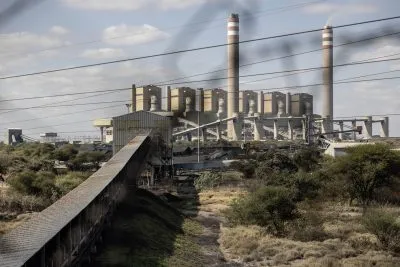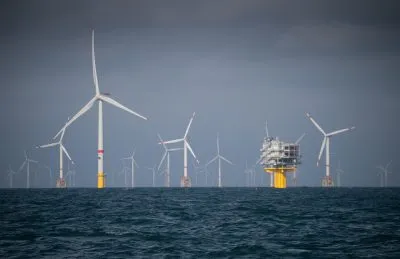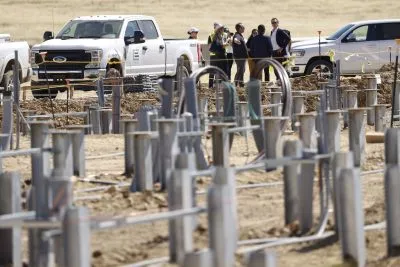With access to one of the largest reserves of phosphates in the world, the OCP Group is a strategically important part of the Moroccan economy, and the company expects to take a leading role in the country’s industrialisation and to support the government’s desire to build trade and investment relationships with sub-Saharan Africa. Nadia Rabaa reports from Casablanca.
Jorf Lasfar is a deepwater port an hour south of Casablanca; an industrial hub on the Atlantic coast from which OCP is building a $600m facility that will cement its rise up the agriculture value chain and drive its expansion into Africa’s fertiliser markets.
OCP, formerly Office Cherifienne des Phosphates, started life mining Morocco’s rich phosphate deposits – which remain the country’s top export earner. Since then it has evolved to become a vertically-integrated agriculture company, moving up the value chain into the manufacturing and distribution of fertilisers.
The company is also expanding south, joining the Moroccan government’s political and commercial push into growth markets in sub-Saharan Africa. The Jorf Lasfar plant will focus on producing fertilisers specifically designed for African soils, while the company is also building a facility in Gabon, a joint venture with the government in Libreville.
OCP is hoping to capitalise on the growth in sub-Saharan Africa’s agriculture sector, which remains the cornerstone of employment in many countries, but is only now experiencing an investment boom from the public and private sector.
Oil-producing countries, such as Gabon, Nigeria and Angola, are looking to build their agriculture sectors as part of their economic diversification strategies. Doing so will require a massive investment in inputs, as the region’s use of fertiliser and improved seed lags behind the rest of the world. It is this market opportunity that OCP hopes to tap.
The strategy seems to be paying off, with the company posting some of its best ever results in the first three quarters of 2014. In its last results for those first three quarters it had year to date revenues of $3.5bn, a 3% year-on-year increase.
In the third quarter of 2014 alone, the group sold 1.5m tonnes of fertilisers, a 63% year-on-year increase over 2013, with revenues reaching $1.3bn. Investors have backed OCP’s strategy. The group raised just under $2bn on the capital markets in 2014 to help finance its ambitious expansion strategy.
OCP’s long-term growth is tied in with regional and global demographic trends. Food security remains an issue of global concern, and a perennial issue in Africa. The world population is expected to reach 9bn by 2025, requiring a proportional rise in food production. Climate change and changing land use patterns will mean that there is a simultaneous reduction in the amount of cultivated arable land.
To meet the global demand for food means making existing land more productive, which means more fertiliser. Over 70% of the growth in production across farming is attributable to an increase in yields. Much of the slack in the food supply will need to be taken up by Africa, where productivity and yields are low due to low levels of mechanisation, but where the majority of the world’s uncultivated arable land remains.
According to the Alliance for a Green Revolution in Africa (AGRA), the consumption of mineral-based fertilisers in Africa is currently only 9-10kg compared to 125kg in Brazil and 150kg in Asia.
Increasing that figure, and productivity across the continent, will be complex, as the majority of sub-Saharan Africa’s farming takes place at a small scale. Farmers have difficulty accessing the credit and skills that would enable them to acquire and use modern inputs, and companies, such as OCP, that want to develop in the region need to work with farmer groups, governments and civil society to build capacity.
The OCP group, through a philanthropic foundation, has supported skills training and education through its ‘Caravan’ initiative, which reaches out to small-scale farmers in sub-Saharan Africa.
Leading the African charge
The Moroccan government has made building economic and political links with sub-Saharan Africa a key part of its trade strategy, encouraging companies to move south and invest in a range of sectors, from telecoms, construction, financial services and agriculture.
It was during a visit by King Mohammed VI of Morocco to Gabon in March 2014 that OCP announced its joint venture with the Gabonese government to build the largest fertiliser plant in sub-Saharan Africa, with a total capacity of 2m tonnes, in the country.
The joint venture combines Morocco’s phosphate wealth with Gabon’s reserves of natural gas – another key element in the production of fertilisers.
The project includes an emphasis on skills transfer and capacity development in Gabonese small and medium-sized enterprises. The construction of the plant will include investments in vocational training, and procurement and outsourcing will focus on bringing local entrepreneurs into the supply chain, helping to develop the SME ecosystem, create jobs and diversify the economy.
OCP’s strategy has focused on high growth markets, but it has also helped the company to diversify and manage its risks, not least the volatile nature of international commodity markets.
The company has a natural advantage due to its access to large open-pit phosphate deposits in Morocco, but to reduce its costs and make its operations more commercially and environmentally sustainable, the company has invested in research and development and environmental standards.
This includes investments in new transport infrastructure including a new slurry pipeline network which has improved the reliability of supply, lowered costs and reduced carbon emissions. It has also invested heavily in improved extraction techniques.
Want to continue reading? Subscribe today.
You've read all your free articles for this month! Subscribe now to enjoy full access to our content.
Digital Monthly
£8.00 / month
Receive full unlimited access to our articles, opinions, podcasts and more.
Digital Yearly
£70.00 / year
Our best value offer - save £26 and gain access to all of our digital content for an entire year!
 Sign in with Google
Sign in with Google 


